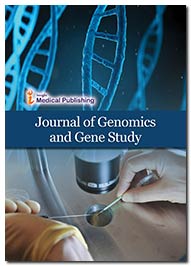Genome-wide association analyses identify genotype-by-environment interactions of growth traits in Simmental cattle
Jared E Decker
Division of Animal Sciences, University of Missouri, Columbia, USA
Biograph
Understanding genotype-by-environment interactions (G×E) is crucial to understand environmental adaptation in mammals and improve the sustainability of agricultural production. Here, we present an extensive study investigating the interaction of genomewide SNP markers with a vast assortment of environmental variables and searching for SNPs controlling phenotypic variance (vQTL) using a large beef cattle dataset. We showed that G×E contribute 10.1%, 3.8%, and 2.8% of the phenotypic variance of birth weight, weaning weight, and yearling weight, respectively. G×E genome-wide association analysis (GWAA) detected a large number of G×E loci affecting growth traits, which the traditional GWAA did not detect, showing that functional loci may have nonadditive genetic effects regardless of differences in genotypic means. Further, variance-heterogeneity GWAA detected loci enriched with G×E effects without requiring prior knowledge of the interacting environmental factors. Functional annotation and pathway analysis of G×E genes revealed biological mechanisms by which cattle respond to changes in their environment, such as neurotransmitter activity, hypoxia-induced processes, keratinization, hormone, thermogenic and immune pathways. We unraveled the relevance and complexity of the genetic basis of G×E underlying growth traits, providing new insights into how different environmental conditions interact with specific genes influencing adaptation and productivity in beef cattle and potentially across mammals.
Open Access Journals
- Aquaculture & Veterinary Science
- Chemistry & Chemical Sciences
- Clinical Sciences
- Engineering
- General Science
- Genetics & Molecular Biology
- Health Care & Nursing
- Immunology & Microbiology
- Materials Science
- Mathematics & Physics
- Medical Sciences
- Neurology & Psychiatry
- Oncology & Cancer Science
- Pharmaceutical Sciences
